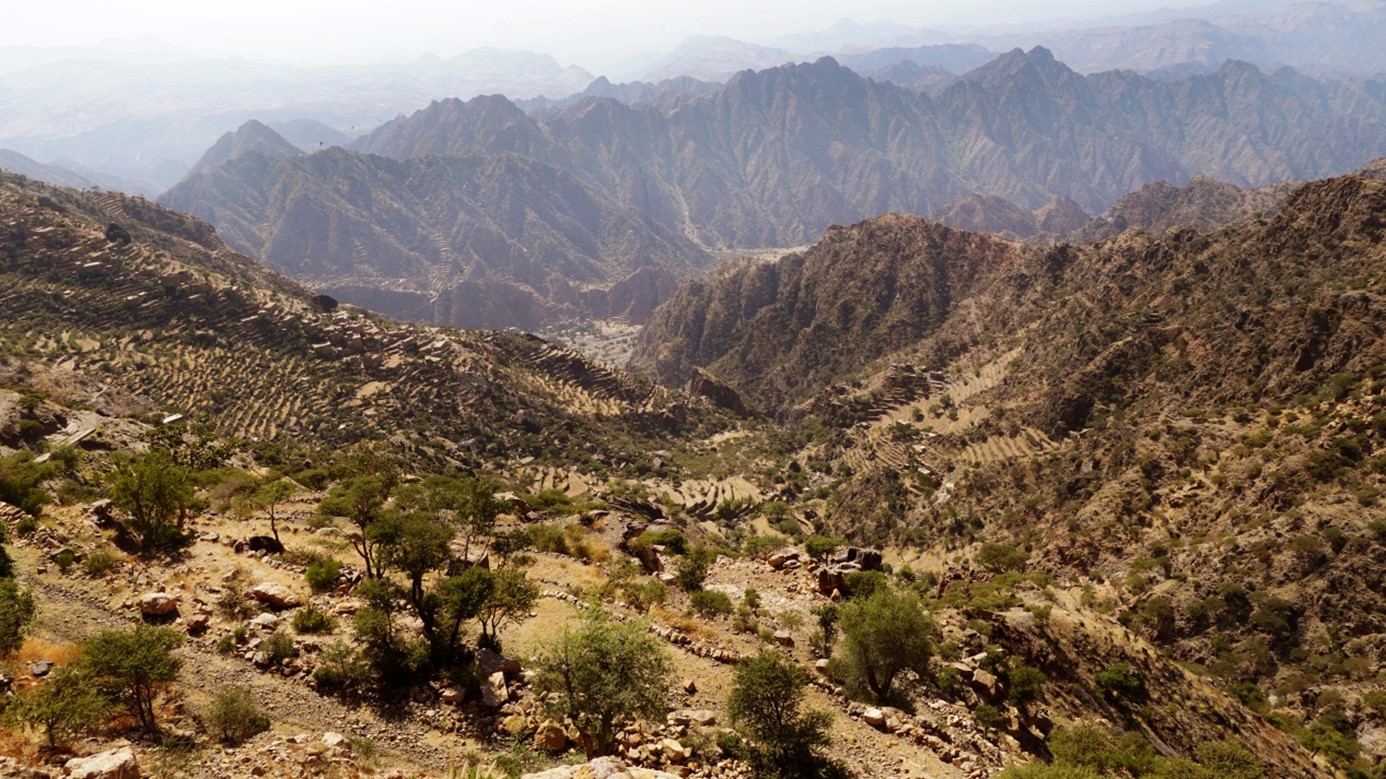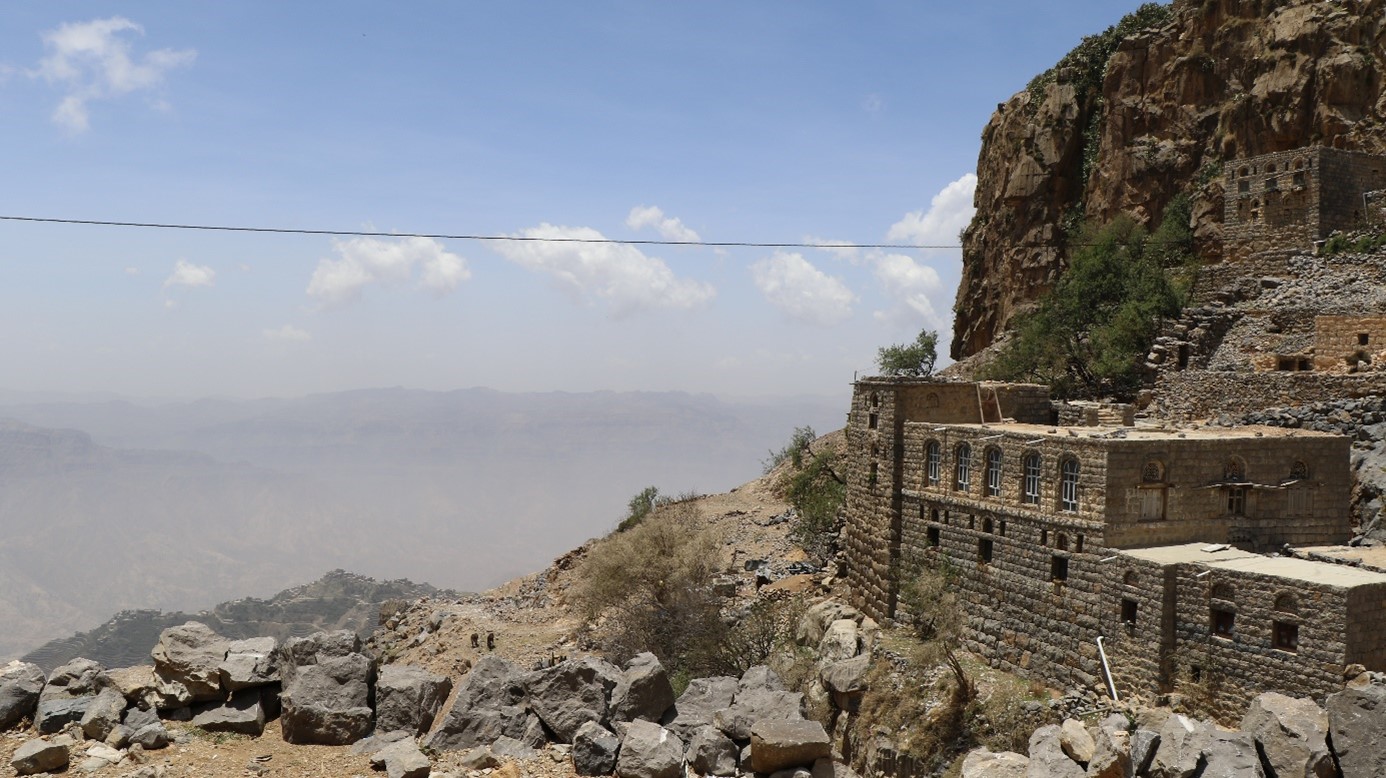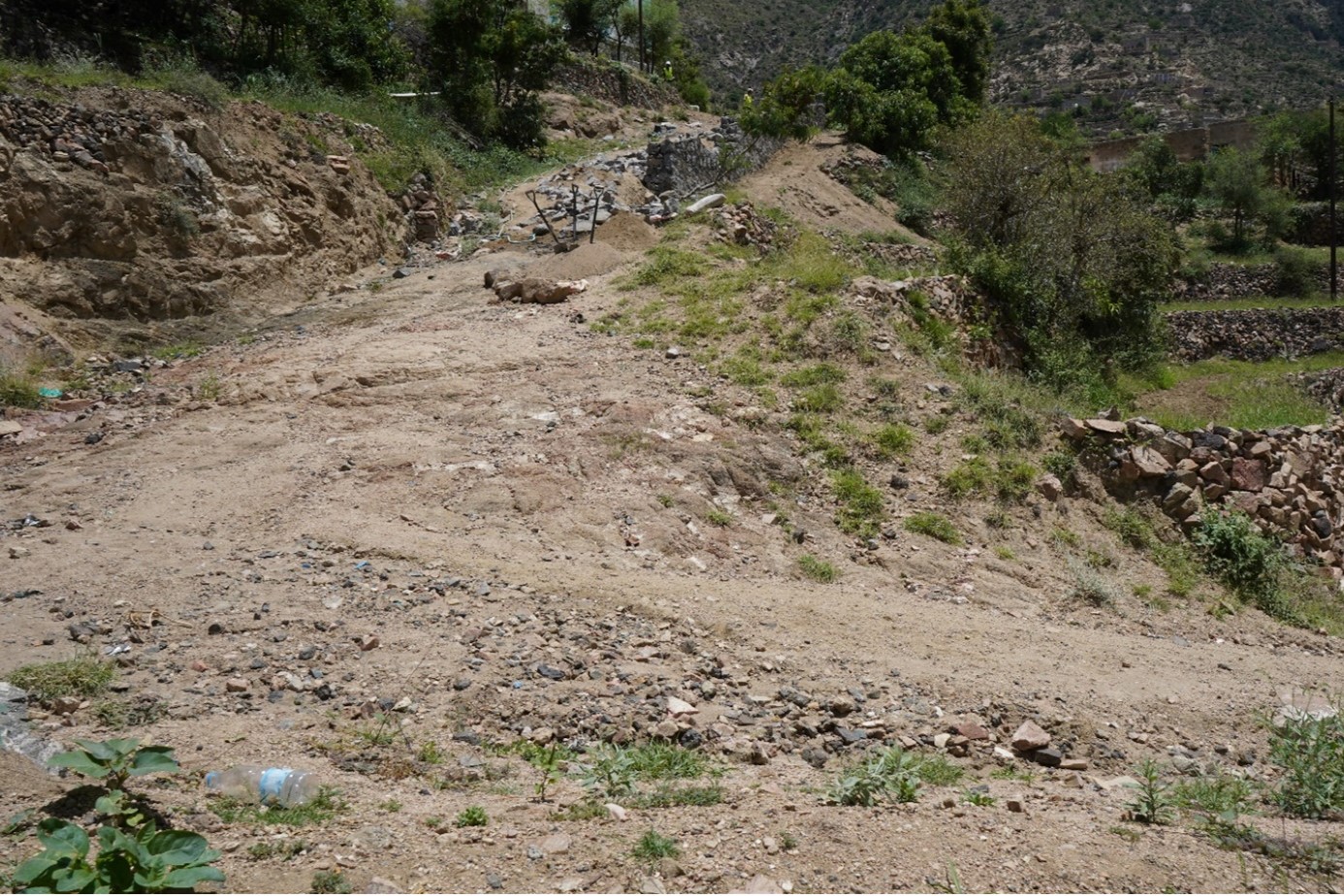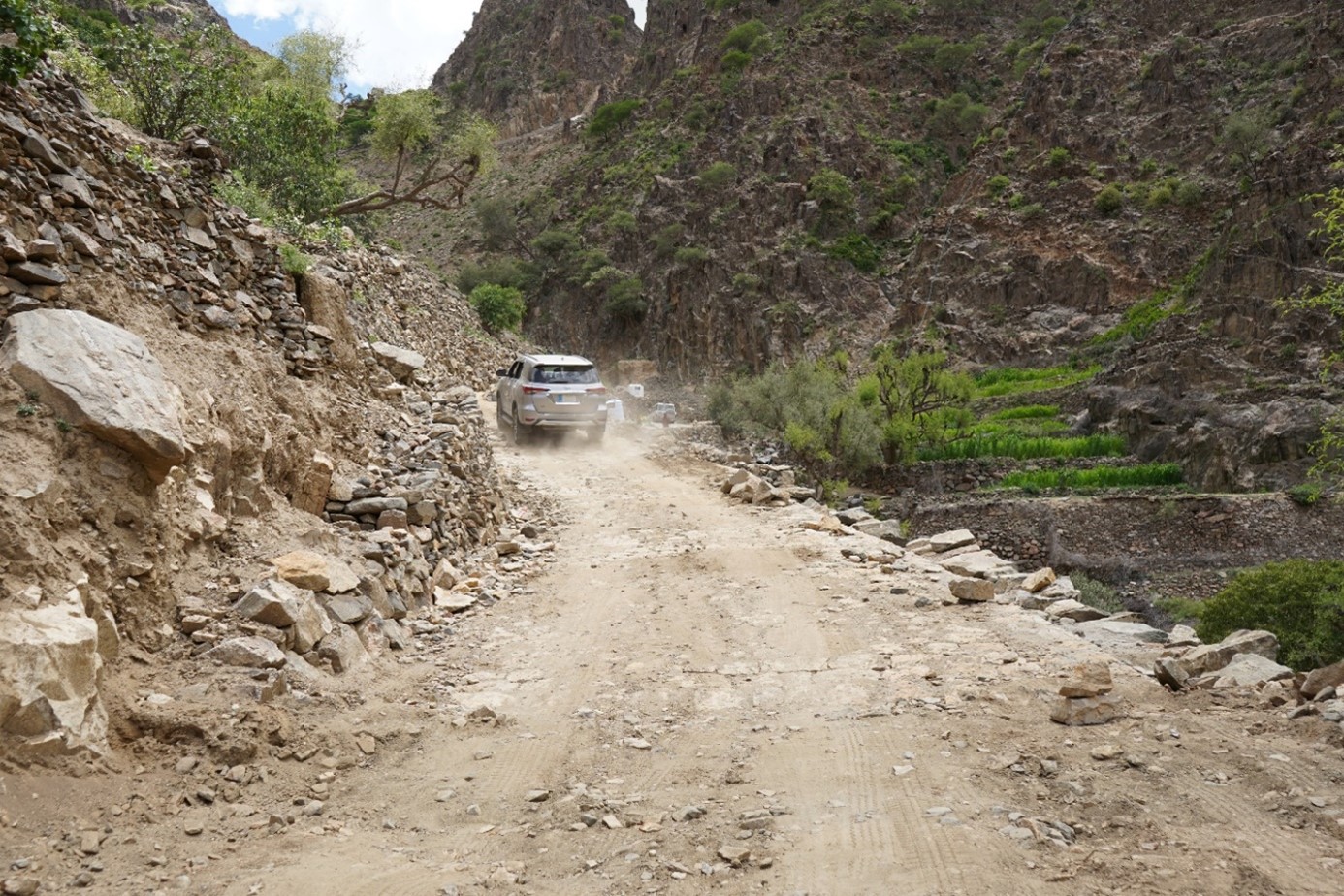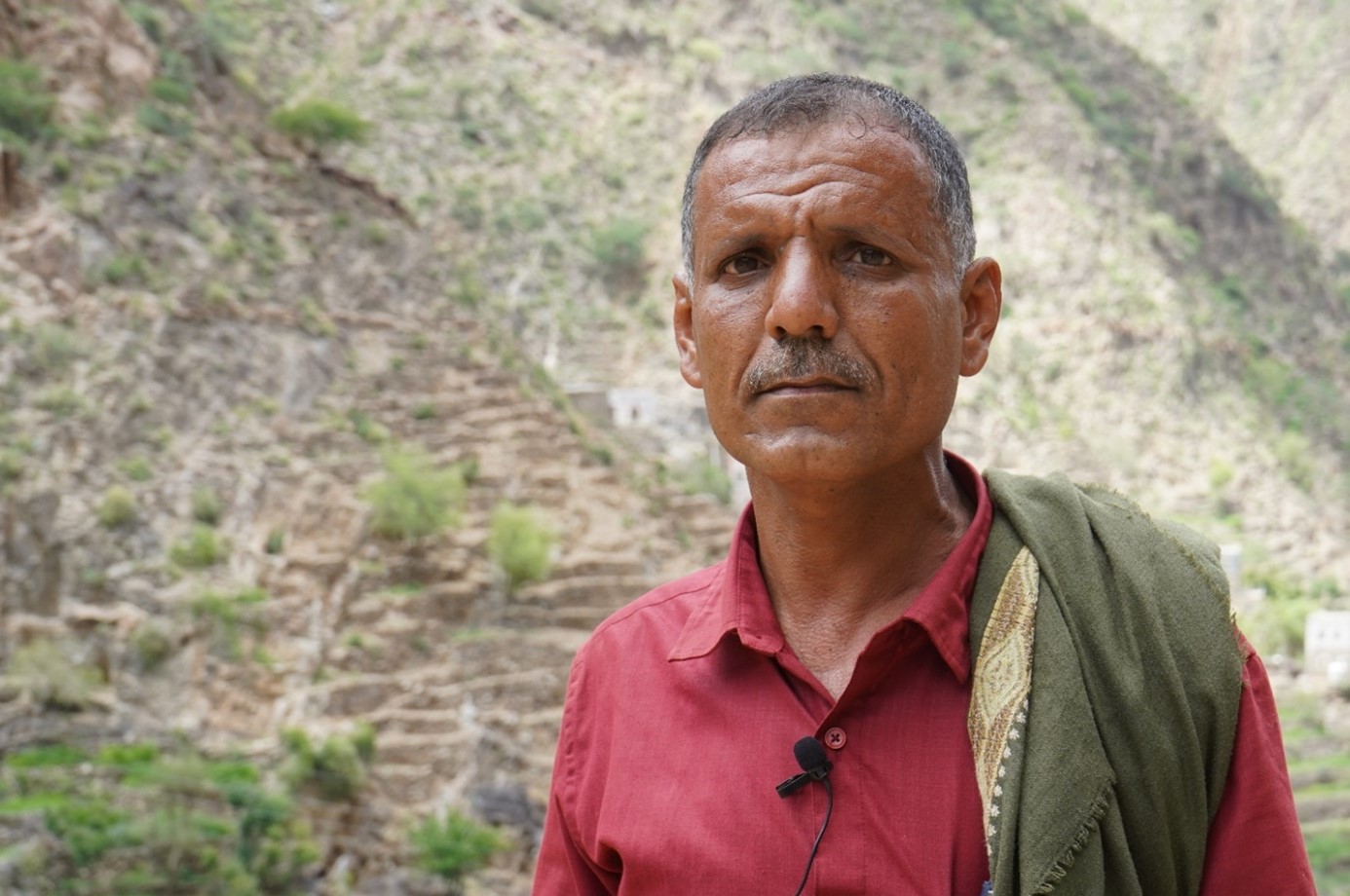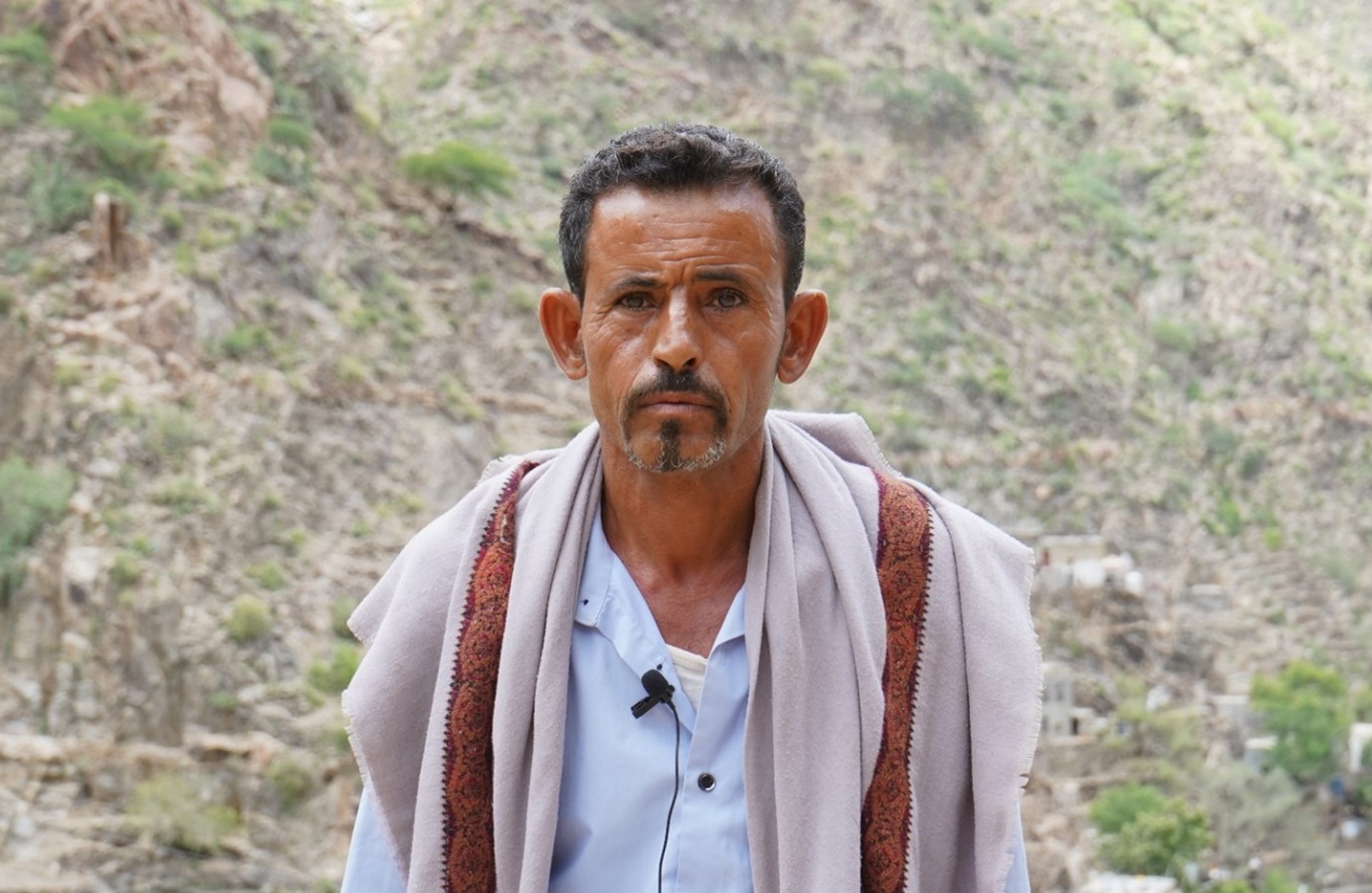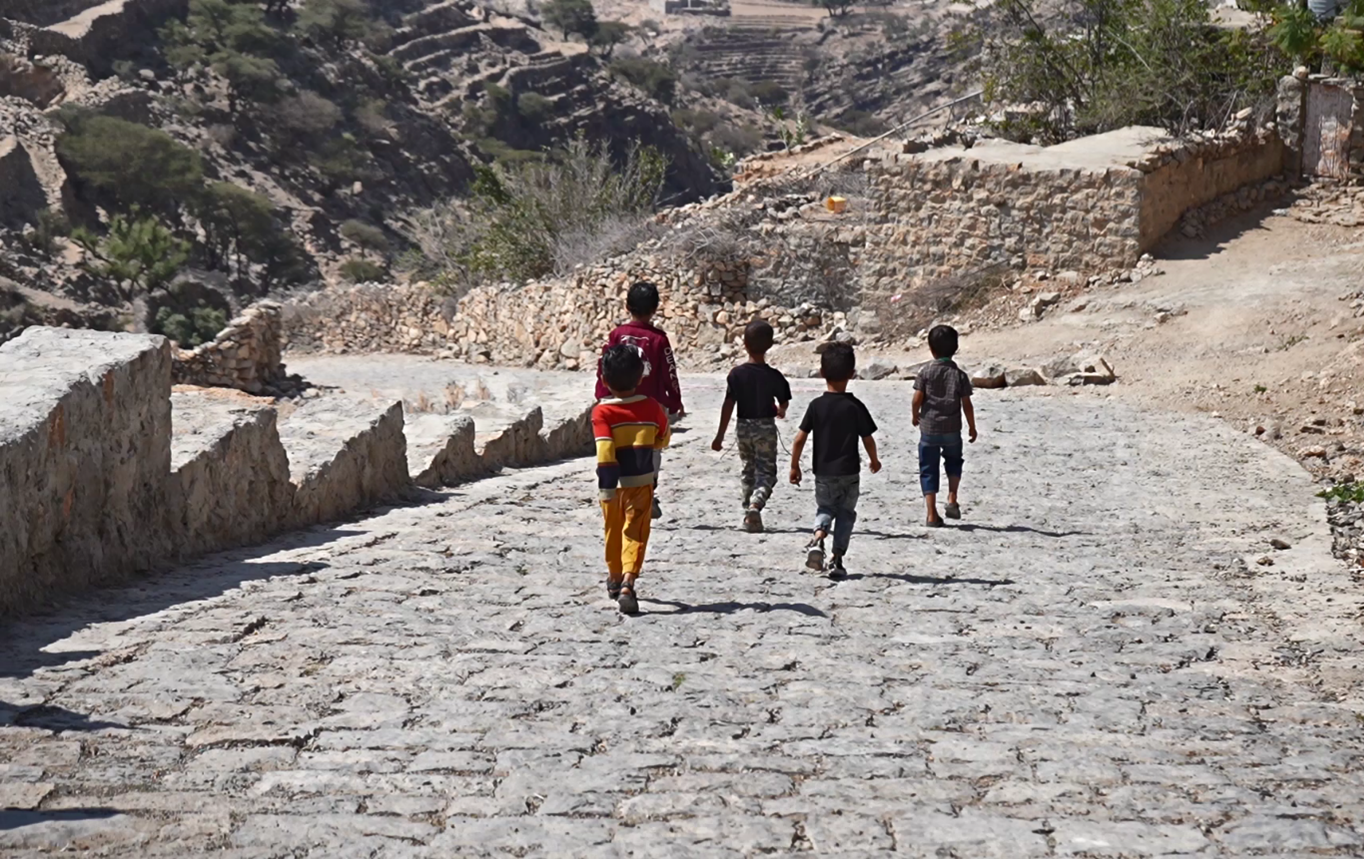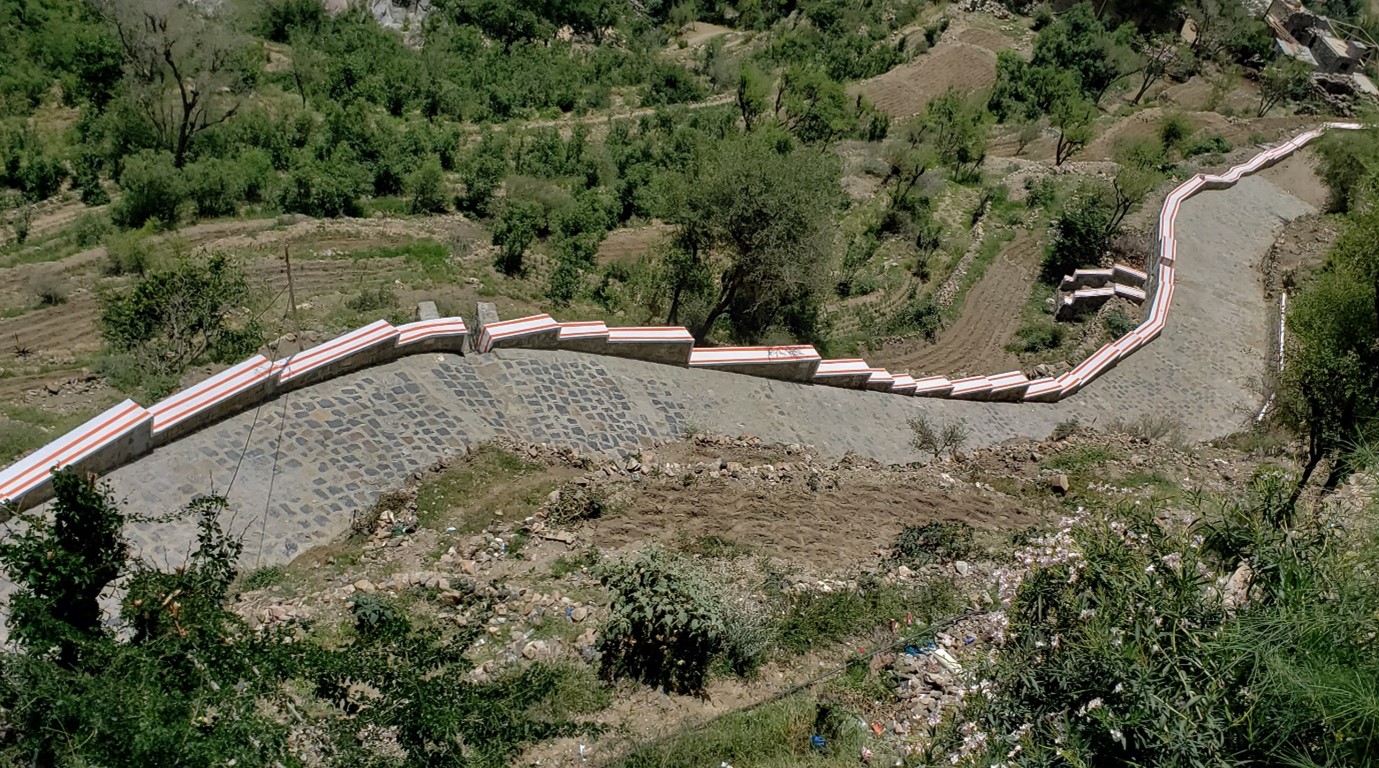Fares Mohammed, a 40-year-old father of six children, is another resident of the Dabsan area. He works as a daily wage farmer. “Roads are very important to us farmers to deliver our crops to the market,” says Fares. “The condition of the road directly impacts our incomes and access to vital services such as water.”
Reminiscing how the unpaved road hampered residents’ access to healthcare, Fares says: “Once, a nine-month pregnant woman experienced complications during delivery, and we had to transfer her to the hospital, which is four hours away from our village. The rough road exacerbated her situation, and she ended up giving birth in the car before reaching the hospital. This mother’s life could have been lost due to the road; it was only by God’s mercy that she survived.”
